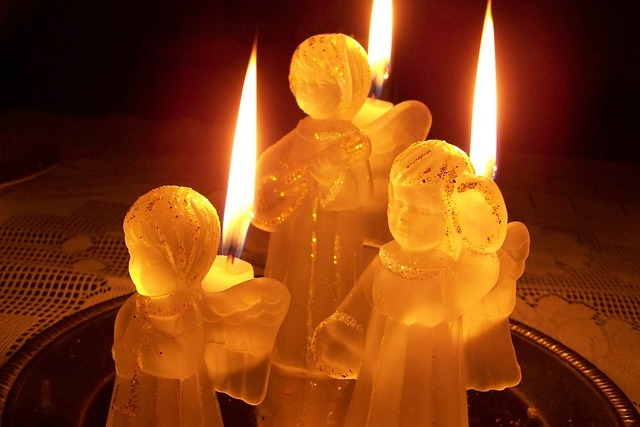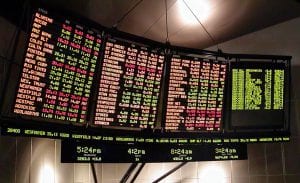
Jan 19, 2024
Introduction
In the dynamic world of financial markets, where the balance between risk and reward is as delicate as a tightrope walk, the Hammer Candlestick often emerges as a beacon of hope for traders. This bullish signal, particularly in an uptrend, can be a game-changer, marking a potential turning point in price movements. This article seeks to demystify this essential tool, breaking down its anatomy, implications and applications in an easy-to-understand manner.
The Hammer Candlestick: A Brief Overview
In the intricate tapestry of financial trading, candlestick patterns form a crucial thread. They are the language of the markets, telling stories of battles between bulls and bears, of shifting momentum and emerging opportunities. Among these patterns, the Hammer Candlestick holds a special place. Its unique shape and the story it tells have made it a favourite among traders.
The Hammer Candlestick is a child of the Japanese rice markets of the 18th century. During this period, the legendary rice merchant Homma Munehisa developed the basics of candlestick charting, a revolutionary method that gave traders a visual representation of price movement. Today, this candlestick pattern is adopted universally as a reliable tool in traders’ arsenals.
Resembling the tool from which it derives its name, the Hammer Candlestick is characterized by a small body at the upper end and a long shadow stretching downwards, like the handle of a hammer. The small rectangle body represents the range between the opening and closing prices. The thin shadow represents the session’s price excursion, which shows the highest and lowest traded prices.
The appearance of a Hammer Candlestick during a trading session signifies that the market is in the process of finding where support and demand lie. In the context of a bearish trend, where sellers have the upper hand, the emergence of a hammer signifies a potential change in the wind’s direction.
Picture this: the market opens, and sellers, continuing the bearish trend, push the prices down. But then, at some point during the session, the buyers begin to step in. They start absorbing the selling pressure, driving the prices back up. The market closes near the opening price, leaving behind a long shadow to tell the tale of the day’s fight. This is the birth of a Hammer Candlestick. It tells us that the sellers tried to dominate but ultimately failed and that the buyers have started flexing their muscles.
This is where the true power of the Hammer Candlestick lies. It is a visual representation of a significant shift in market dynamics. It’s a warning that the bears have started losing their grip on the market, and the bulls might be preparing for a charge.
In conclusion, the Hammer Candlestick, with its distinct shape and the story it tells, is an invaluable tool for traders. It provides a visual cue to potentially significant market shifts, helping traders make informed decisions. Its understanding is an essential step in mastering the language of the markets.
The Hammer Candlestick in Uptrends
In the trading world, an uptrend is a trader’s best friend. It’s a period when everything seems to be going right, with prices rising over time, creating higher highs and lows. But as any seasoned trader will tell you, the market is a fickle friend. It can change direction without warning. This is where the Hammer Candlestick comes into play.
In an uptrend, the appearance of a Hammer Candlestick can be a reassuring sign. It’s like a lighthouse guiding traders through a stormy sea, signalling that the uptrend will continue despite the temporary increase in selling pressure.
Imagine a day of trading in an uptrend. The market opens, and almost immediately, prices start to drop. Sellers are in control, and it seems like the uptrend might be coming to an end. But then something interesting happens. The market rejects these lower prices. Buyers start to step in, pushing the price back up. By the end of the trading period, the price has clawed its way back to close near or above the opening price.
This is the story told by the Hammer Candlestick. It’s a tale of resilience, the market’s ability to bounce back from a temporary setback. The long shadow of the Hammer, stretching downwards, is a testament to the rejection of lower prices. It’s a sign that the buyers still have the upper hand despite the sellers’ best efforts.
The longer the shadow, the more significant this rejection of lower prices and the stronger the indication that the uptrend will continue. For traders, this can be a golden opportunity. It’s a signal to potentially go long on the asset and ride the uptrend to potentially profitable trades.
However, it’s important to remember that while the Hammer Candlestick can be a powerful tool, it’s not a crystal ball. It’s a signal, not a guarantee. Many factors influence market dynamics, and while the Hammer Candlestick can provide valuable insights, it should always be used with other tools and indicators.
In conclusion, the Hammer Candlestick, in uptrends, is a beacon of hope in the often tumultuous sea of trading. It’s a signal of potential opportunities, a sign that the uptrend is likely to continue despite temporary setbacks. By understanding and utilizing this tool, traders can confidently navigate the market and potentially improve their trading outcomes.
A Case Study: Apple Inc. (AAPL)
The beauty of technical analysis lies in its practical application. To truly appreciate the utility of the Hammer Candlestick, let’s delve into a real-world example featuring one of the most traded stocks globally: Apple Inc. (AAPL). This example will illustrate the value of the Hammer Candlestick as a predictive tool within an uptrend, providing insight into the market’s underlying dynamics.
On October 13th, 2021, a Hammer Candlestick pattern emerged on Apple’s daily chart amidst the hustle and bustle of the global markets. The broader trend for Apple was bullish, but there was a slight downward trend in the days leading to this date. The stock, opening at $141.23, saw sellers pushing the price down to a low of $138.27 within the trading session.
However, as the market approached this lower price, something pivotal happened – the buyers entered the fray. They began to absorb the selling pressure, and an intriguing tug-of-war ensued. Eventually, the buyers’ resilience shone through, and they pushed the price back up, closing near the day’s high at $141.50.
This particular day’s price action painted a Hammer Candlestick on the chart. This was a subtle yet significant hint – the bears were losing their grip, and the bulls were ready to retake the reins. The market’s underlying dynamics shifted, suggesting the short-term selling momentum was waning.
This hint manifested into a more prominent market move in the ensuing days. Apple’s stock price, validating the bullish signal of the Hammer Candlestick, climbed progressively. By October 28th, 2021, the stock had ascended to $149.99, a remarkable leap that underscored the strength of the broader uptrend.
This case study of Apple Inc. serves to highlight the practical application of the Hammer Candlestick pattern. It demonstrates its predictive power within an uptrend, providing traders valuable insights into potential market turns. However, it’s crucial to remember that while patterns like the Hammer can provide signals, they are not infallible. Traders should always use such patterns with other technical and fundamental analysis tools to make the most informed trading decisions.
The trading world might be complex, but any trader, armed with the proper knowledge and tools, can decode its intricate patterns. The Hammer Candlestick, as this case study demonstrates, is a valuable tool, a guiding light in the fascinating trading journey.
The Contrarian Perspective
We must consider different viewpoints as we delve deeper into the trading world. Among them, the contrarian perspective offers a unique take. While the Hammer Candlestick is a widely used tool and can give traders valuable insights, it is crucial to acknowledge that it is not an infallible predictor of price movements.
The contrarian viewpoint questions the mainstream approach, providing a different lens to evaluate market dynamics. From this perspective, one could argue that an over-reliance on patterns such as the Hammer Candlestick could lead to a herding mentality. This refers to a phenomenon where individuals follow the majority’s actions rather than making independent decisions based on a comprehensive analysis.
This herd mentality in trading can cause significant issues. For instance, traders might become so fixated on identifying the Hammer Candlestick pattern that they overlook fundamental factors affecting an asset’s value. These essential factors can include a company’s earnings reports, economic indicators, industry trends, and geopolitical events, which can significantly impact the asset’s price.
The contrarian perspective encourages traders to consider these factors, promoting a more balanced and holistic approach to market analysis. Yes, the Hammer Candlestick can be a strong signal, but it’s just one piece of the puzzle. Traders must consider it alongside other technical indicators and fundamental analysis to gain a more comprehensive understanding of the market.
For example, a Hammer Candlestick in an uptrend might suggest continuing the trend. However, if this pattern appears just before a company’s quarterly earnings report, and the report turns out to be disappointing, the pattern’s bullish signal could be nullified. Therefore, having a contrarian outlook could help traders avoid such pitfalls.
In conclusion, the contrarian perspective provides a valuable balance to market analysis. It encourages traders to approach the market with a healthy dose of scepticism and consider many factors before deciding. While the Hammer Candlestick can offer valuable insights, it should be part of a broader, more comprehensive trading strategy. As the old saying goes, “Don’t put all your eggs in one basket.” In trading, diversifying your sources of information and analysis methods can help you build a more robust and successful trading strategy.
Conclusion
The hammer candlestick in uptrends is a beacon, steering traders towards potentially profitable trades. However, it should not be used in isolation. The most successful traders understand that a single candlestick is just one piece of the puzzle, no matter how promising it looks. By combining this powerful tool with other indicators and understanding market fundamentals, traders can navigate the financial markets with increased confidence and poise.
Remember, knowledge is power in the world of trading, and understanding the language of candlesticks is a step towards making that power your own.
Mindful Reads: Nourish Your Curiosity
Zero Percent Mortgages Debut: Setting the Stage for Next Bull Market
Bull Bear Traders-Long Term Stock Market Bears Always Lose
Brexit’s Currency Wars: Hidden Theme for Financial Freedom
Surviving the Bear Stock Market: What’s New for Investors?
Fed Interest Rate: Negative Rates Are A Game Changer
What Economic Recovery? Most Americans Lack $1000 In Savings
Federal Reserve Interest Rate: Dangers & Benefits of Negative Rates

Why Are Interest Rates So Low: Coronavirus That’s Why
CAT Stock Price Projections And Future Trends
Why own gold in uncertain times: Protection From Disaster
HD stock quote And future price trends
Valeant Shares Slump



